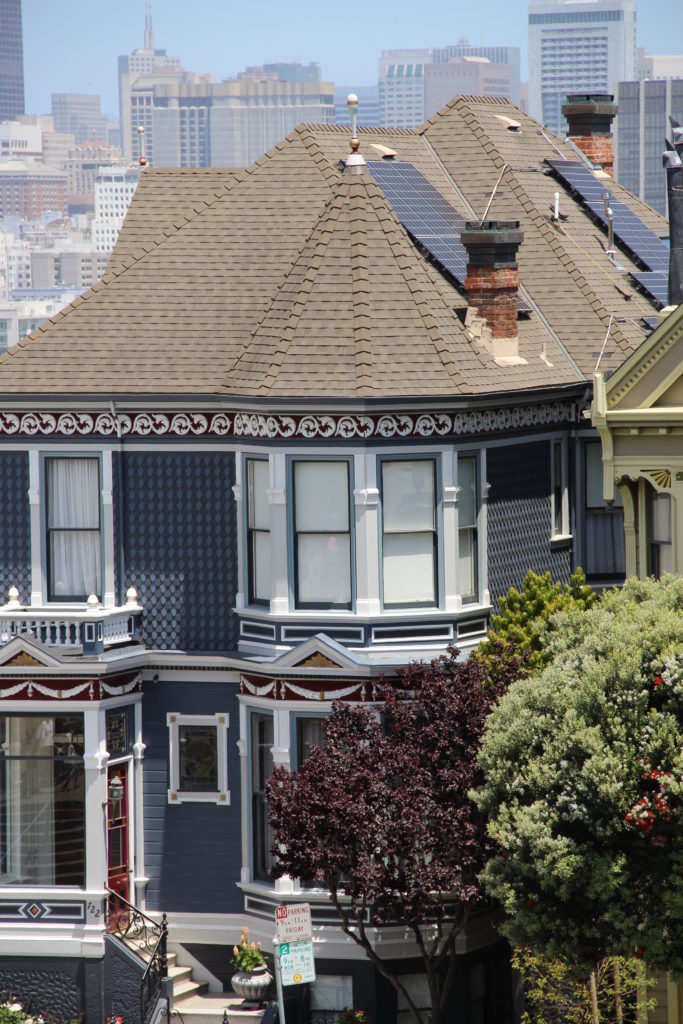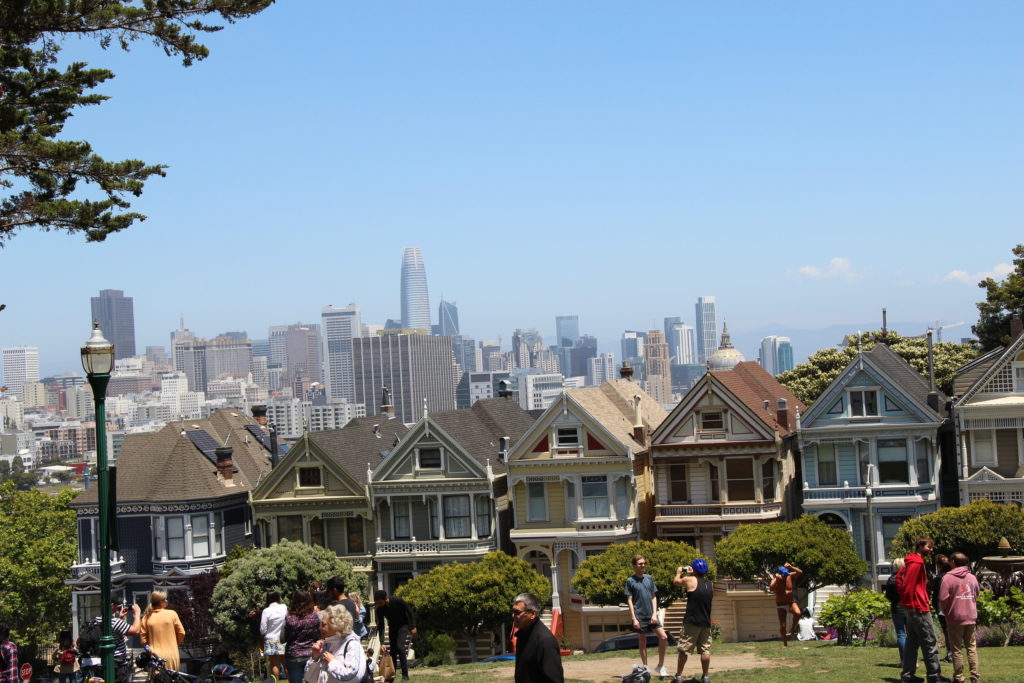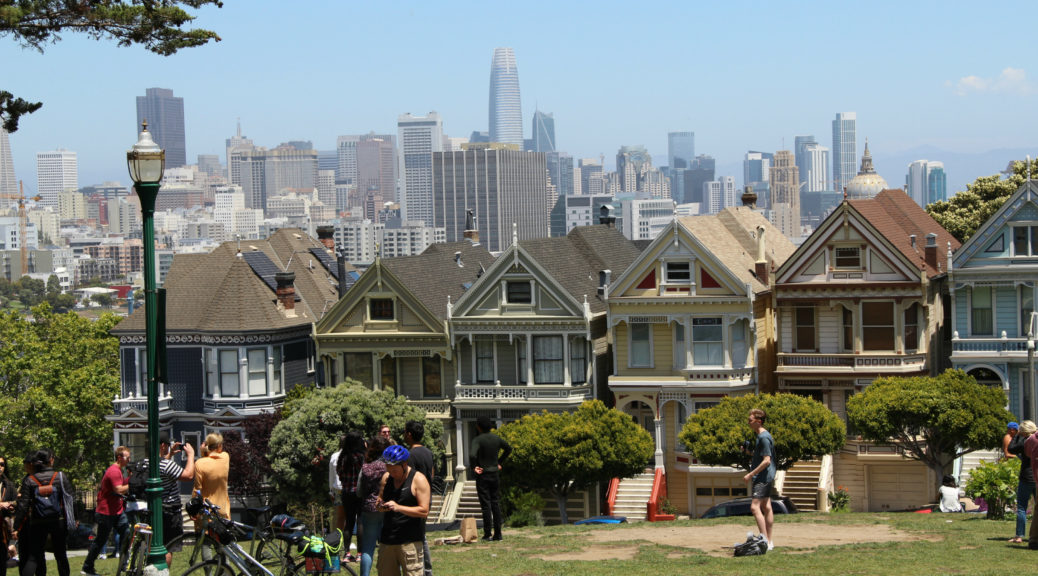
More San Francisco
These are some of the other sites we saw while exploring San Francisco. In addition to independent exploring, we also did a walking tour and a sunrise photography tour.
This is the Palace of Fine Arts which we saw on our sunrise photography tour. The Palace was originally built in 1915 for the Panama-Pacific Exposition. It is one of the few buildings remaining from the Exposition. It was never meant to last longer than the Exposition so was rebuilt in 1965. The lagoon was renovated in 2009 and the palace was retrofitted to make it more resistant to earthquakes that same year. It has served a variety of functions and currently hosts art exhibits and events (including weddings). It has also appeared in several movies.


As part of our sunrise tour we also drove through the Presidio. It is an old military fort that dates back to 1776 when it belonged to Spain. It then became part of Mexico and finally a part of the United States when it was transferred to the US in 1848. It has been deactivated as a military base and is part of the National Park Service. It now serves both public and private functions. There are scenic overviews of the Golden Gate Bridge, the San Francisco Bay and the Pacific Ocean. George Lucas of Lucasfilms built the Letterman Digital Arts Center here. We made a brief stop here to see the Yoda statue, a bronze statue just over two feet tall (life-size). You can also visit the Lucasfilm Lobby here Monday through Friday. We were there on a Saturday so could only look through the glass doors – but I did get a picture of R2D2. When the Lobby is open, you can also see other Star Wars memorabilia including a Darth Vader costume and Yoda’s lightsaber.

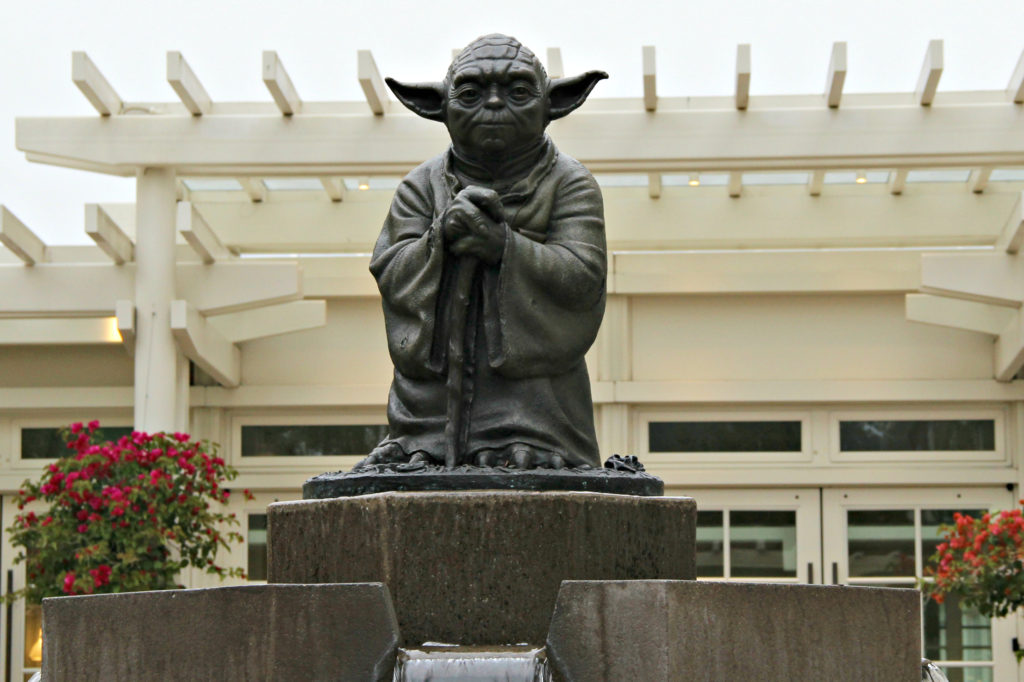
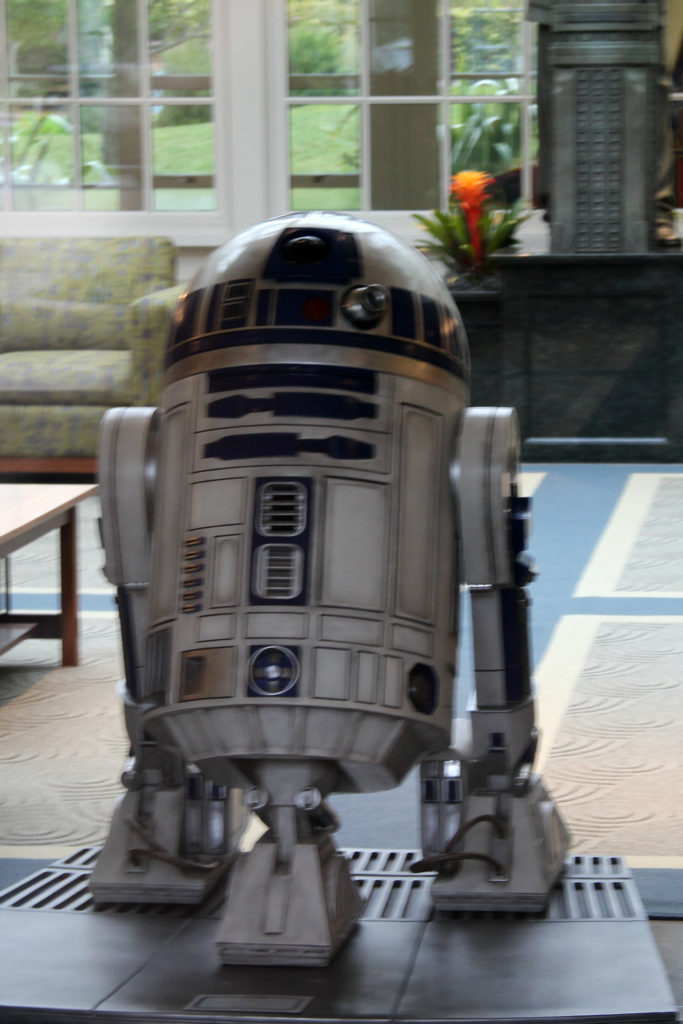
The Holocaust Memorial or “The Survivor” evokes a very different feeling. It is located at Lands Inn in San Francisco which is within the Golden Gate National Recreation Area. This is the story of the Jewish people in San Francisco and how this memorial came to be:
Jews were among the city’s earliest settlers. Beginning during the Gold Rush of 1849, Jews came here looking for a fresh start and a level playing field. By the 1870s, San Francisco had the largest Jewish population in the country outside of New York. Since everyone was a newcomer in the West there was little anti-Semitism. Jews were accepted and they assimilated, starting many prosperous businesses….But in 1977, something happened that set the city’s Jewish community on edge. A bookstore selling racist literature, called the Rudolph Hess, opened in the Richmond district…Protests unfortunately turned violent, and the store was trashed and burned while onlookers cheered. Several days later, rocks were thrown through the stained glass windows of Temple B’nai Emunah. A committee of Holocaust survivors and prominent members of San Francisco’s Jewish community approached Mayor Feinstein’s office asking for help to build a Holocaust memorial.
http://www.sfcityguides.org/public_guidelines.html?article=1648&submitted=TRUE&srch_text=&submitted2=&topic=the
George Segal was selected as the sculptor. The memorial consists of sculptures of those killed in concentration camps. While the bodies lay on the ground, another prisoner looks through the fence. The sculptures were made of plaster cast covered with bronze and then painted white. The memorial was dedicated in 1984. There have been times when graffiti was painted on the figures. Segal is said to take this in stride, believing it points out that prejudice in our country is still an issue.
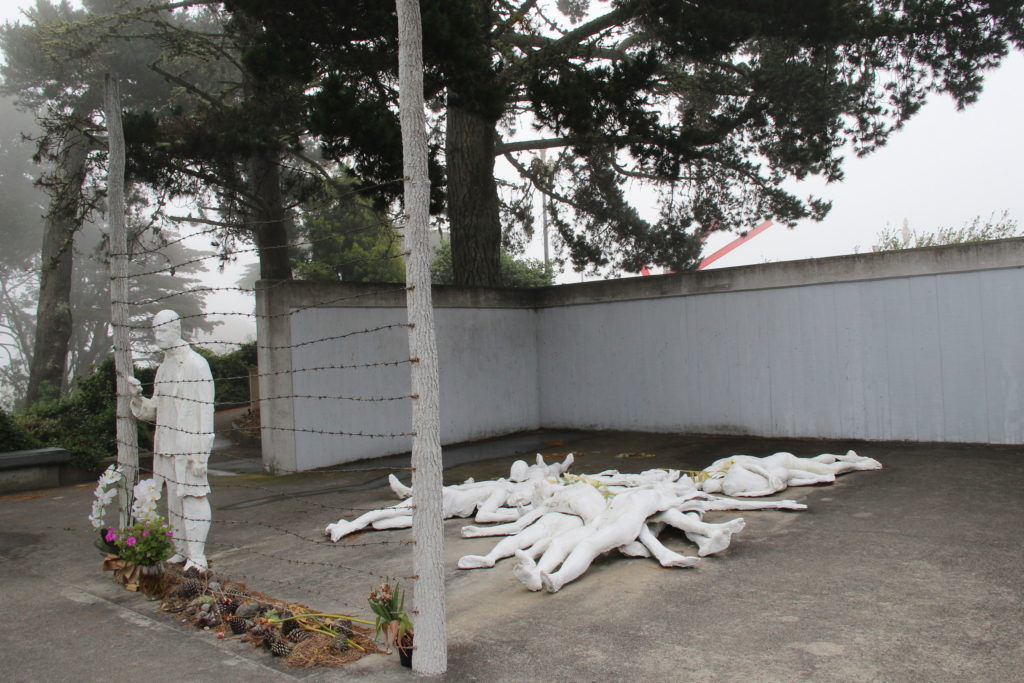
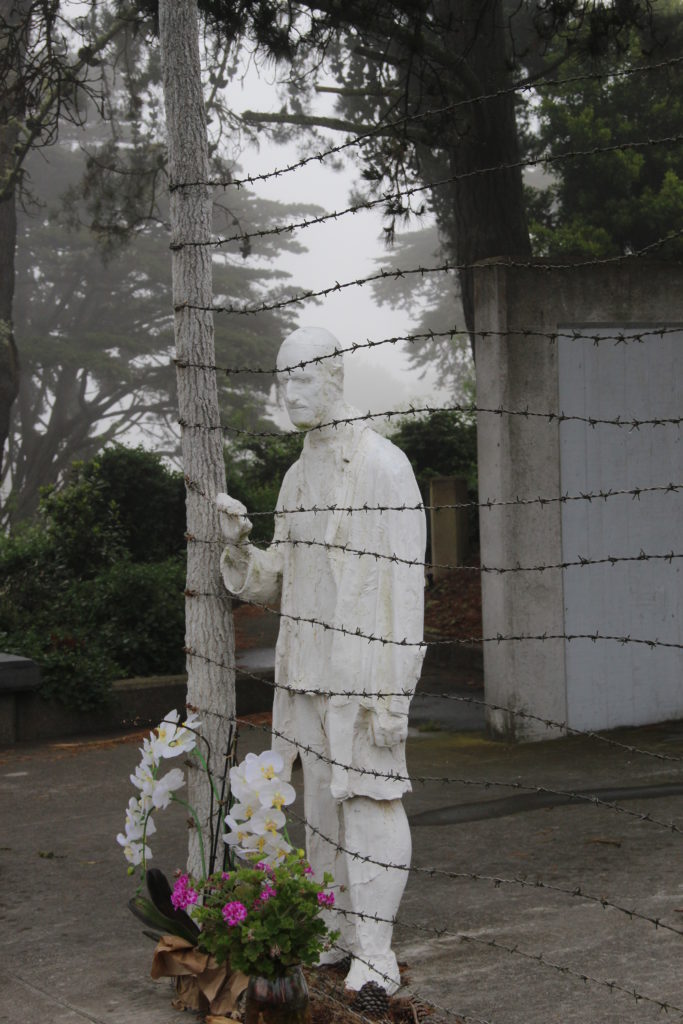
The next pictures are some we took during our walking tour. The first is of Coit Tower, named for Lillie Hitchcock Coit. It sits at the top of Telegraph Hill. Coit was wealthy but eccentric. She smoked cigars and gambled, sometimes dressing as a man to get into men-only gambling establishments. When she was 15, she saw the Knickerbocker Engine Company Number 5 trying to put out a fire. They did not have a full compliment of firefighters so she assisted. She became a mascot to the engine company and often assisted them in fighting fires. She died in 1929 leaving much of her money to beautify San Francisco. It was this bequest that funded Coit Tower which was constructed in 1933. Some say the top was designed to resemble the nozzle on a firehose but others say this is not true. We saw the tower from a distance, but it is possible to tour the tower and to go to a viewing area within the tower where you will see beautiful views of the city. There is also a collection of murals inside the tower that were created to provide work to artists under Franklin Delano Roosevelt’s New Deal. They represent different political ideologies so many were controversial.
The mural you see in the next pictures are not in Coit Tower but at the Diego Rivera Gallery located in the San Francisco Art Institute. Rivera was a Mexican artist. I read that he actually began drawing on the walls of his home at age three. His parents, rather than not allowing this, put chalkboards and canvases on the walls so he could continue to draw. He studied art in Mexico and later in France and Italy. In Mexico, he was one of the artists in their mural program. His artistic style features “simplified figures and bold colors.” His art tells a story.
Rivera was invited to San Francisco in 1930 where he painted three murals. His murals were actually frescoes, a technique he probably learned while in France or Italy. The one we saw is entitled “The Making of a Fresco Showing the Building of a City” and was completed in 1931. The San Francisco Art Institute is open to the public (no charge). You can also go on the roof for views of the city. This is a description of the mural:
(The mural) is considered a fresco within a fresco. It shows the painters in action as they build the fresco. You can see all of the artists, along with their scaffolding, layered on top of the masterpiece they are completing. This one also includes the backside of Diego Rivera as he watches the artists work on the fresco below.
https://www.sftourismtips.com/diego-rivera-murals.html



The next pictures were taken in the Nob Hill Neighborhood. The name comes from four wealthy railroad families (known as the “Nob’s) who built their homes on this hill. One of these men was Charles Crocker. His daughter-in-law found the statue pictured below in a villa outside of Rome. She purchased the statue for her home. It is a copy of a Roman statue, entitled Fontana della Tartarughe which is translated “Statue of the Turtles.” The statue was donated to the City of San Francisco in 1954 and placed in Huntington Park the following year.
The Crocker’s estate burned down in 1904 and the land was donated to Grace Cathedral which is now across the street from Huntington Park. The Cathedral has beautiful bronze doors called the Doors of Paradise. They are fashioned after the doors on the Baptistry in Florence and depict Old Testament stories. Following the fountain, there are pictures of the Cathedral, including the exterior, a close-up one of the squares on the bronze door, the sanctuary, the rose window and a painting depicting the construction of the cathedral.
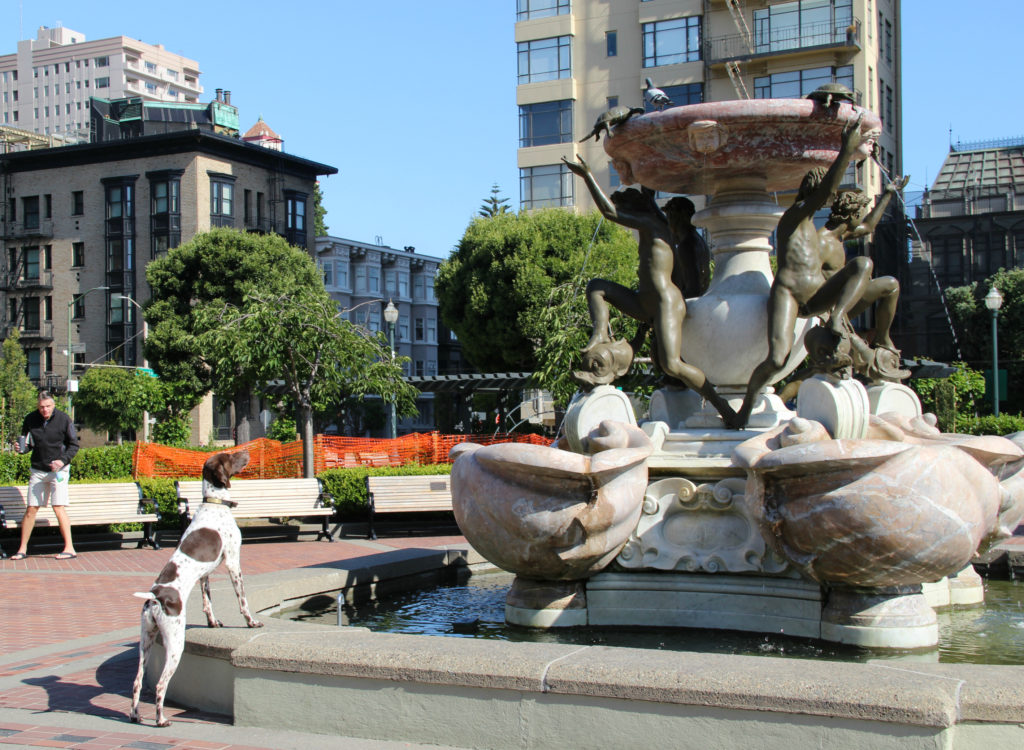
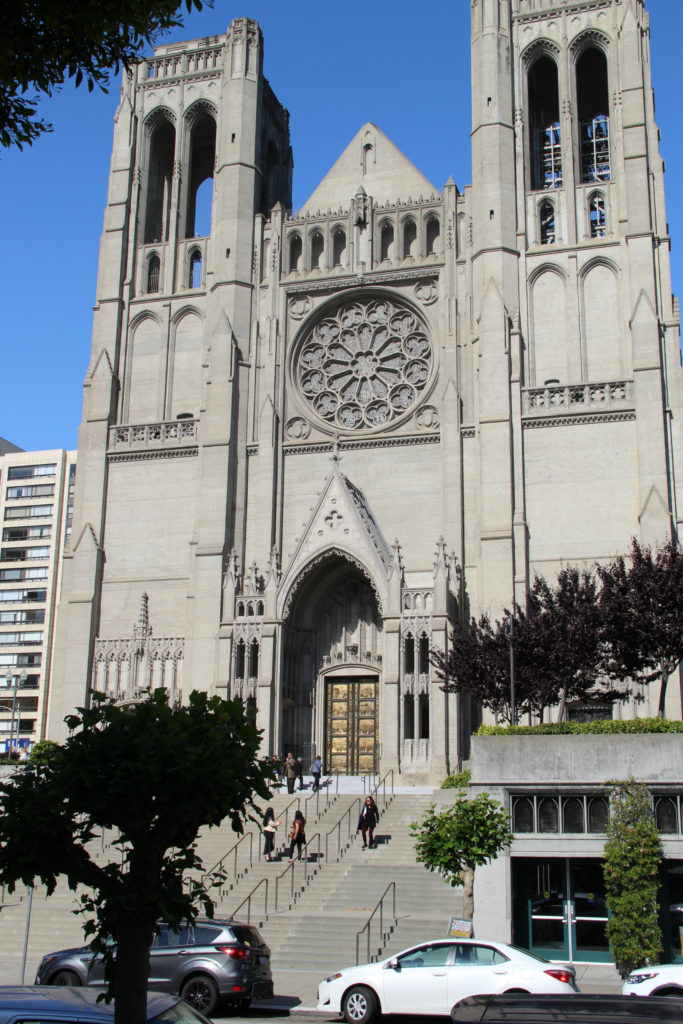
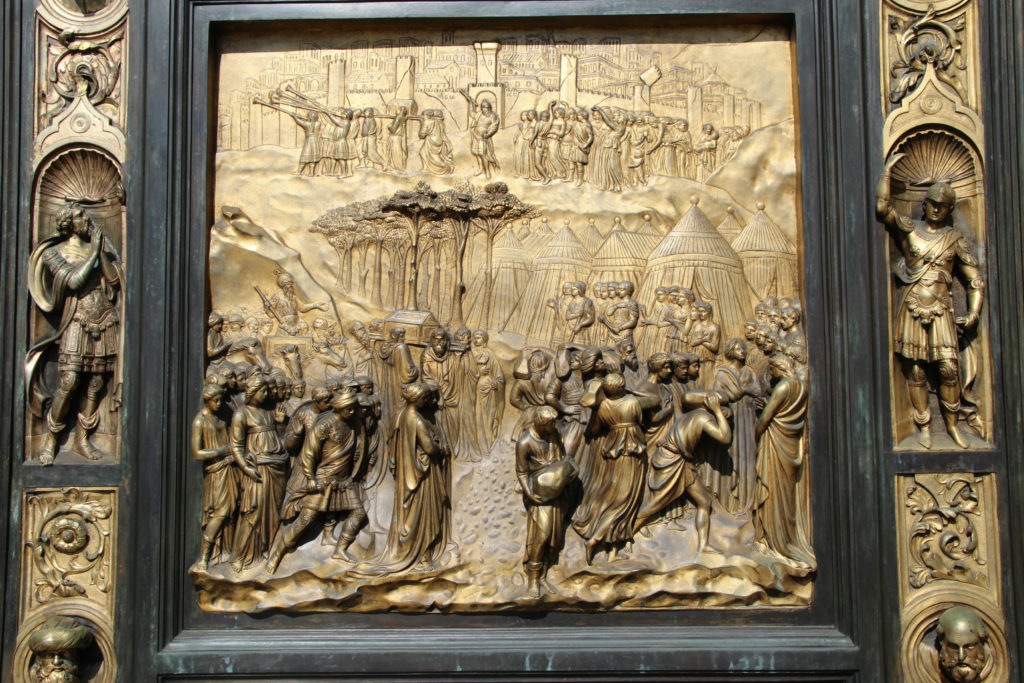

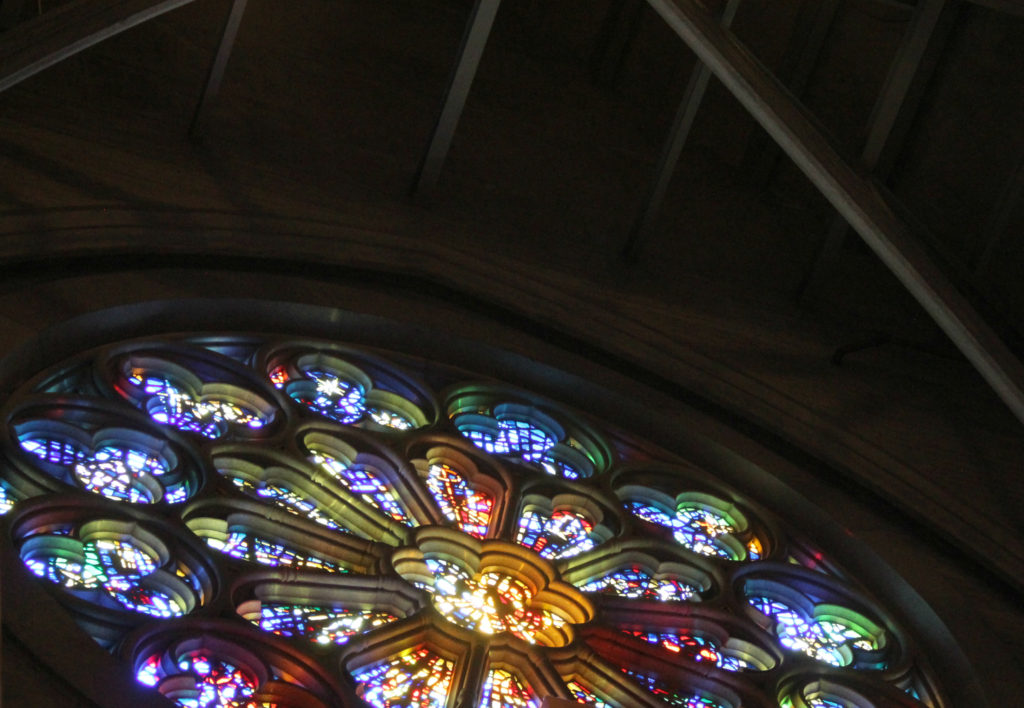
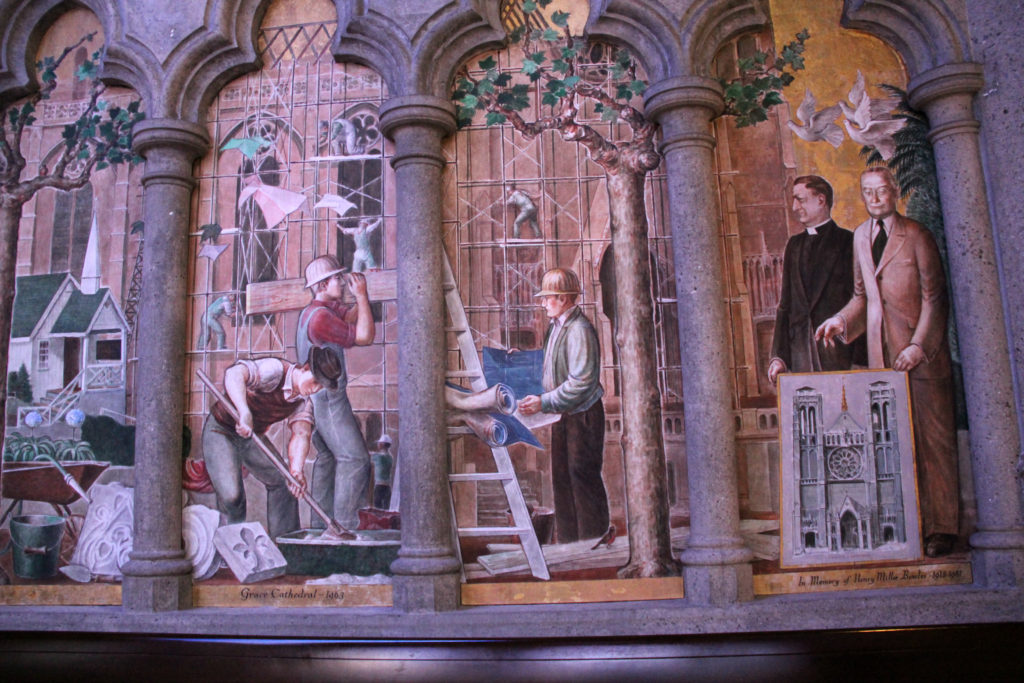
We also stopped at Alamo Square, which provides a great view of the famous Victorian-style houses (“the painted ladies”) with the modern buildings of San Francisco in the background. It is one of the most photographed places in San Francisco so is referred to as “Postcard Row.” The houses were originally built from 1892 to 1896 and are just a few of the Victorian homes throughout San Francisco. Many were lost in the 1906 earthquake, but these are among those that survived. They are the most famous because of their appearance on TV shows (including Full House), commercials and movies.
The houses were originally painted in bright colors which showcased their architectural details. During World War I and II, many were painted in “battleship gray,” with surplus paint from the war. In addition to those lost during the earthquake, others were demolished and some had their decorative trim removed and the exteriors covered in brick or aluminum siding. In 1963, an artist, Butch Kardum, painted his Victorian house in bright blues and greens. Some didn’t like his color choice but others did and began painting their houses in bright colors as well. Kardum actually advised some people on their color choices. By the 1970s, this became very popular and was known as the colorist movement. It transformed many of San Francisco’s streets and neighborhoods.


